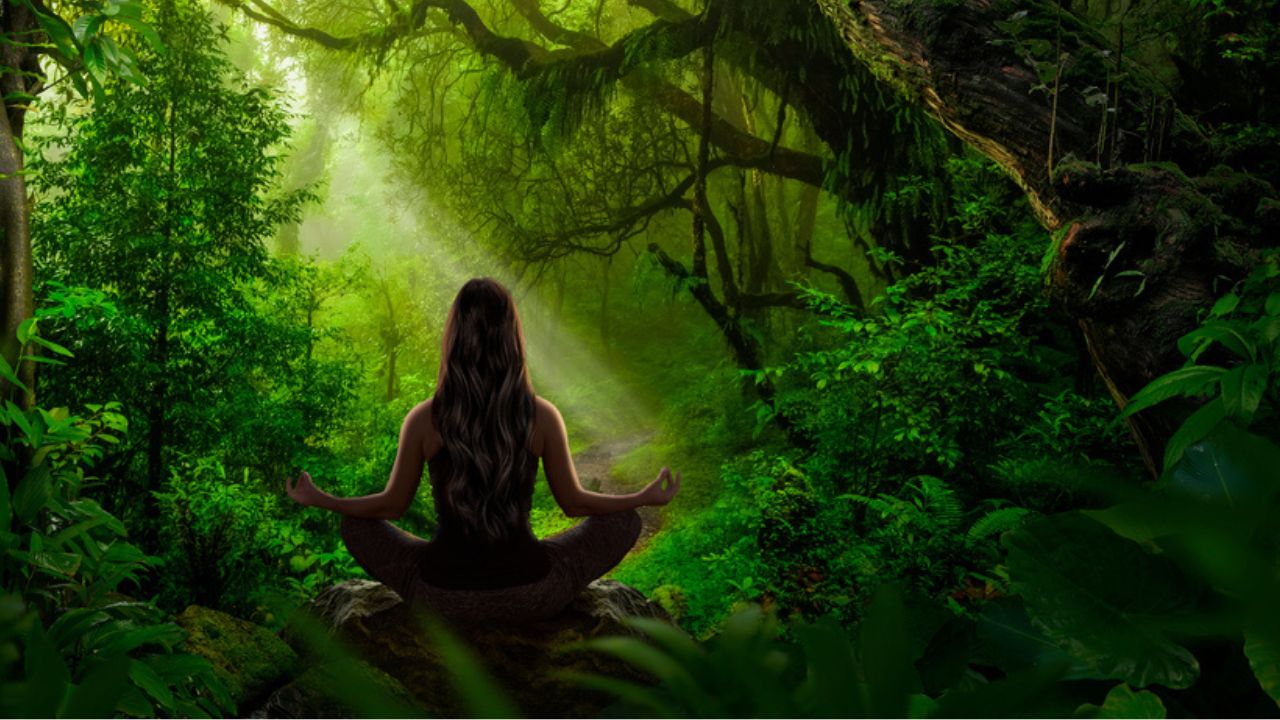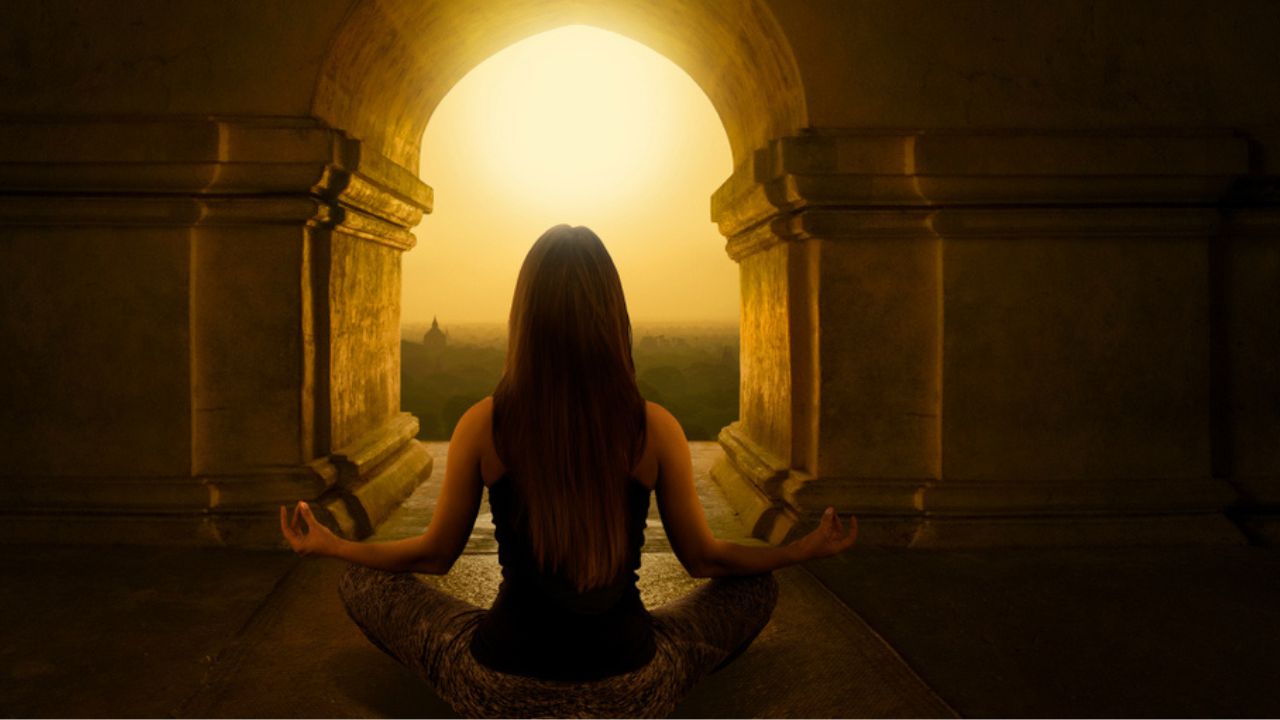Kundalini Meditation: Balancing Mind, Body, And Spirit
Kundalini meditation is a transformative journey that awakens your potential for awareness and enlightenment by releasing inner energy through the chakras.

Kundalini yoga's transformational journey transcends simple relaxation, delving into the profound depths of your inner being. The ancient practice of Kundalini meditation serves as a tool to still the mind or seize a moment of tranquility. This dynamic process engages the latent energy nestled at the spine's base, primed for activation. This energy, often visualized as a slumbering serpent, awakens and ascends through the body's seven chakras, unlocking avenues to self-realization and spiritual enlightenment.
Central to the Kundalini chakra philosophy is the conviction that within each individual lies dormant energy, a key to unlocking our fullest potential. Practitioners engage in specialized techniques like profound breathing, mudras (gestures), mantras (chants), and physical exercises, commencing a quest to rouse this energy. It ascends from the base, or root chakra, to the crown chakra, catalyzing a profound transformation. This path encompasses not only spiritual awakening but also the creation of harmony among mind, body, and soul.
The practice of Kundalini awakening meditation transcends a standard meditative practice; it holds a comprehensive lifestyle approach. By forging a connection with your breath and immersing in these mindful techniques, you initiate a conversation with your innermost self. This journey cultivates an enhanced comprehension of your physical and mental being, leading to physical, spiritual, and mental health.
What Is Kundalini Meditation?

Kundalini meditation yoga is a unique form of yoga that aims to awaken and harness the Kundalini energy, envisioned as a dormant, serpent-like force at the spine's base. It incorporates simple body postures, breathing exercises, meditation, and chanting to activate this energy. As it rises through the body's energy centers or chakras, it's believed to enhance self-awareness, internal harmony, and spiritual connection. This practice, rooted in ancient Hindu philosophy, blends various techniques like posture alignment, rhythmic breathing, focused meditation, and vocal mantras. It helps evoke a positive energy within to develop mind-body awareness and build a deeper connection with our soul.
According to our reviewer Dr Samar, "Kundalini meditation has varied physical, emotional, spiritual and mental health benefits. It is known to revitalize the body, mind, and soul. Some of the benefits of this meditation include improved physical vitality/energy, spiritual awakening, improved cognitive function, deeper connection with people around, and reduction in anxiety and stress. Furthermore, it helps people build a relaxed and positive outlook toward life, leading to better control and regulation of emotional experiences and expressions. This meditation has the capacity to build resilience and a higher state of control and understanding. Trying out this technique under guided supervision could be extremely beneficial." Its overall goal is not just physical fitness but a profound transformation in consciousness, leading to greater spiritual enlightenment and well-being.
History of Kundalini Meditation

Kundalini Chakra meditation is all about waking up a special kind of energy, known as Kundalini, which is often imagined as a sleeping snake resting at the bottom of your spine. Dr Samar further says, " It does help in improving spine strength and resilience. One of the basic goals of kundalini meditation is to facilitate or improve the health of your spine. The postures that are maintained as a part of its practice are known to rejuvenate your spinal column. It can also aid in alleviating back pain, strengthen core muscles, increase spine flexibility, and prevent common posture problems, especially in people with a desk job and a sedentary lifestyle.” This energy is really powerful and is believed to help a lot with personal spiritual growth and reaching a higher state of understanding and awareness.
Early Beginnings
Kundalini meditation started around 1000 to 500 BCE. It was mentioned in the Upanishads, written between 800 and 500 BCE. These texts first talked about Kundalini energy and its role in spiritual practices.
How It Developed
Initially, the Kundalini movement was a closely guarded secret, taught only to devoted students after years of study. This made it a mysterious and special practice for a small group of people. Over time, it evolved to include physical movements, becoming Kundalini yoga. However, it remained largely unknown outside a small circle of teachers and students.
Spreading to the West
When Yogi Bhajan introduced the Kundalini yoga practice to the West in the late 1960s, especially in the United States, it became more popular (1).
Kundalini Today
These days, Kundalini meditation and yoga are popular in Western countries. People leading busy lives often suffer from stress, and life turns hard.
Kundalini yoga meditation has been popular among people for a very long time. This ancient practice brings relaxation, mental peace, and a healthy heart.
How to Do Kundalini Meditation?
With its diverse array of techniques, Kundalini meditation offers a unique and comprehensive approach to spiritual and mental wellness. While several methods can seem overwhelming, especially regarding Kundalini meditation for beginners, guidance from a teacher can help tailor the practice to specific needs.
Here’s a detailed breakdown of the how-to-perform process that will give you an in-depth understanding of Kundalini Chakras meditation.
Preparing for Meditation

1. Choose light, loose clothing to ensure comfort during this meditation practice.
2. Cover your head with a cloth for better energy flow.
3. Straighten your spine and sit on the chair or you can also sit on the floor. Adopt a prayer pose by pressing your palms together at chest level. Keep your eyes almost closed, allowing just a sliver of light.
4. Direct your focus to your third eye, the space between your eyebrows, while keeping your eyes gently closed.
5. Incorporate a mantra in Gurmukhi or any mantra that resonates with you. Chant it aloud or silently to help direct your focus.
6. Inhale and exhale slowly through your nose, with each complete breath cycle lasting about 8 seconds. Concentrate on how your breath energizes your body.
7. Use specific hand positions (mudras) like the Gyan mudra (touching the first finger to the thumb for wisdom) or the Shuni mudra (middle finger to thumb for patience).
8. Divide each inhale and exhale into four equal parts, inhaling and exhaling in quick succession. With each segment, gently pull your navel towards the spine.
9. When your mind wanders, gently guide your focus back to your breath. Acknowledge any intrusive thoughts and let them drift away.
10. For beginners, a 3 to 5-minute session is ideal. Gradually increase the duration as you become more comfortable.
11. Conclude with a deep breath, raising your arms entirely as you inhale and relaxing as you exhale.
Kundalini meditation, though seemingly intricate, can be a fulfilling and enriching experience, even for those new to meditation. The practice, characterized by specific postures, focused breathing, and mantras and mudras, offers a holistic approach to wellness. Starting with short sessions and simple techniques, you can gradually deepen your practice and reap its numerous benefits.
Benefits of Kundalini Meditation

Kundalini meditation yoga offers various benefits extending well beyond the typical rewards of traditional meditation. For spiritual growth and physical well-being, Kundalini yoga stands out as more about enhancing personal health and enlightenment. Below are a few potential benefits of practicing Kundalini meditation.
May Strengthen Your Body
Kundalini yoga comprises dynamic asanas (postures) that may help strengthen the body, enhance flexibility, and improve overall physical health (2). Hence, it may help you relieve chronic pain or physical injuries and gain a healthy body.
May Reduce Stress Levels and Anxiety
Kundalini yoga focuses on deep breathing exercises and meditation, which may eventually calm your mind and help you reduce anxiety levels (3).
May Enhance Mental Clarity
Regular practice of Kundalini yoga can lead to enhanced mental clarity and focus. This improvement in brain function is a direct outcome of the mindfulness and concentration cultivated through the practice (4).
May Boost Energy Levels
Kundalini yoga is particularly effective in increasing energy levels. Activating the body's natural energy centers combats fatigue and enhances overall vitality (5). This increase in energy can be attributed to the unique combination of physical postures and breathwork integral to the practice (5).
May Improve Emotional Well-being
This type of yoga helps a lot with feeling emotionally healthy. It helps get rid of negative feelings and makes space for happiness and calmness inside (6). The way Kundalini yoga makes you emotionally stable is valued.
May Deepen Spiritual Connection
Spirituality makes your life better and indulging in Kundalini yoga may wake up Kundalini energy, leading to spiritual growth among practitioners.
May Aid Depression
Kundalini Yoga looks after your whole well-being. It cares for your body, mind, and soul all together. The mix of body poses, breathing exercises, active meditation techniques, and chanting mantras helps to keep you balanced and healthy in every way (7).
Kundalini yoga is a practice with many sides that offers lots of benefits for your body, mind, feelings, and spirit. The way it mixes different methods makes it a really strong way to change yourself for the better and be healthy in every way.
Kundalini Meditation Risks
Meditation is certainly powerful. However, there's no such proof that it causes long-lasting bad effects. Kundalini meditation includes deep breaths and breathing slowly. In case you are not used to this type of meditation yoga, you might feel like your head is spinning after an intense session. Hence, it’s advisable to practice this meditation under the guidance of a supervisor, especially when you’re a beginner.
Conclusion
Kundalini meditation offers more than just a series of physical exercises. It's a journey that maintains the rhythm of breath and the precision of postures. And the power of meditation improves an individual’s life. Combining postures like the energizing Cobra, the Bow pose, and other yoga postures with mindful breathing and mudras awakens your vital energy. The practice culminates in a serene meditation to understand you better. This fusion of asanas and pranayama is not only about planning a workout session for the body. It nourishes the soul, soothes it, keeps your stress away, and makes you feel happier.

Yoga Poses for Period Cramps: Gentle Relief for Menstrual Discomfort





 JOIN OUR WHATSAPP CHANNEL
JOIN OUR WHATSAPP CHANNEL























































